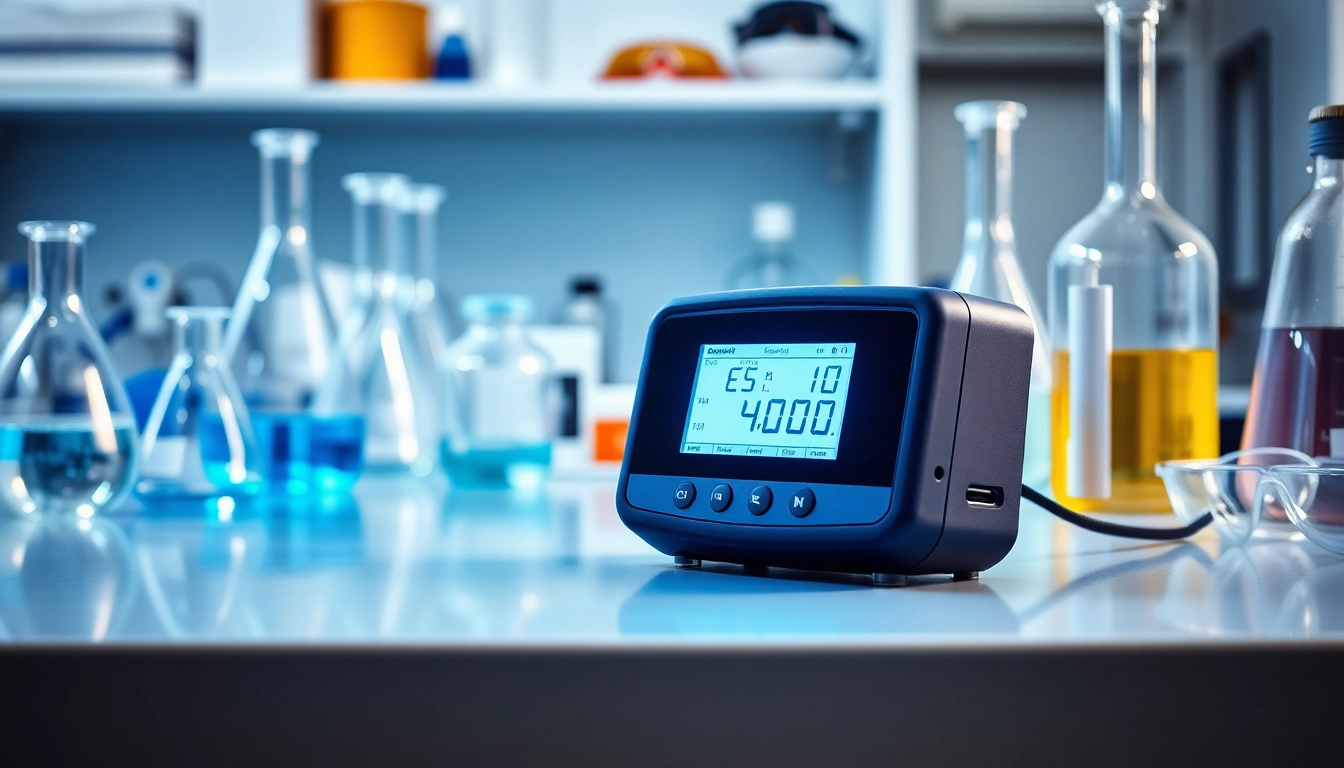Understanding Ammonia Detectors
In industrial and laboratory environments, the detection of hazardous gases like ammonia (NH3) is vital for ensuring safety. An ammonia detector is a crucial tool for this purpose, serving to monitor air quality and alert personnel to potentially dangerous gas leaks. Understanding how these devices operate, their applications, and the types available on the market will help you make informed choices when selecting an ammonia detector for your specific needs.
What is an Ammonia Detector?
An ammonia detector is an instrument designed to identify the presence of ammonia gas in the air. It plays an essential role in various sectors, including agriculture, chemical manufacturing, food processing, and HVAC systems, where ammonia is often used as a refrigerant and in fertilizers. Ammonia detectors come equipped with various sensor technologies to detect the concentration of ammonia, providing timely alerts to prevent hazardous situations.
How Do Ammonia Detectors Work?
Ammonia detectors typically operate using two primary detection principles: electrochemical sensors and metal-oxide semiconductors. Electrochemical sensors react chemically with ammonia, generating a current proportional to the concentration of the gas, while metal-oxide semiconductor sensors change their electrical resistance based on the gas concentration. When ammonia levels exceed the pre-set safety thresholds, the detector triggers audible and/or visual alarms to alert users.
Common Applications of Ammonia Detectors
The applications for ammonia detectors are extensive, with various industries adopting these devices to ensure safety standards and regulatory compliance:
- Food Processing: Used to monitor ammonia levels in refrigeration systems to prevent leaks.
- Agriculture: Essential in livestock facilities and nurseries where ammonia is released from waste.
- Chemical Manufacturing: Detects ammonia in production facilities to avert hazardous build-up and mitigate risks.
- Refrigeration: Vital for facilities using ammonia as a refrigerant, ensuring safe operating conditions.
Types of Ammonia Detectors Available
Portable Ammonia Detectors
Portable ammonia detectors are handheld devices designed for personal safety and convenience. They are ideal for technicians who work in environments where ammonia exposure may occur, offering real-time data and alarms while enabling easy mobility. Units like the Wingman F1 and ZYKYCX Portable Ammonia Detector are notable for their compact designs and user-friendly interfaces.
Fixed Ammonia Detectors
Fixed ammonia detectors are installed in strategic locations within a facility to continuously monitor air quality. These devices are permanently mounted and often integrated with facility alarm systems, providing constant surveillance for hazardous ammonia levels. They are particularly useful in large industrial sites and can be configured for remote monitoring and control.
Multi-gas Detectors Including Ammonia
Multi-gas detectors are versatile devices equipped to detect various gases, including ammonia. This makes them suitable for use in environments where exposure to multiple different gases is a risk. Some leading models offer customizable sensors that can be tailored to specific needs, enhancing safety and functionality in diverse applications.
Key Features to Consider When Buying an Ammonia Detector
Sensitivity and Accuracy
When selecting an ammonia detector, pay close attention to sensitivity and accuracy ratings. A high sensitivity level enables the device to detect low concentrations of ammonia, which is critical for early leak detection. Furthermore, look for detectors with a proven track record of reliability based on product reviews and industrial case studies.
Response Time and Alarm Systems
Response time is another vital feature of an effective ammonia detector. A quick alarm response can make the difference in emergency situations. Most modern ammonia detectors come equipped with both visual and audible alarms, but be sure to check the specifications to ensure they align with workplace safety requirements.
Calibration and Maintenance Requirements
Regular calibration and maintenance are crucial for ensuring the longevity and efficacy of ammonia detectors. When purchasing, inquire about the calibration frequency and any maintenance protocols that need to be followed. Understanding how to maintain your device will help prevent costly repairs or replacements in the future.
Installation and Placement Guidelines for Ammonia Detectors
Best Locations for Mounting
Ammonia is lighter than air and tends to rise, making placement critical for effective detection. Positioning detectors near potential leak sources, such as storage tanks, valves, or compressors, is advisable. It’s also best to mount these devices close to the ceiling, concurrent with operational safety protocols.
Considerations for Indoor vs. Outdoor Use
When installing ammonia detectors, consider environmental factors such as temperature extremes, humidity, and exposure to contaminants. Outdoor detectors should have weatherproof features, while indoor models may require filter maintenance to prevent dust or grime from affecting sensor readings.
Regulatory Compliance and Safety Standards
Understanding regulatory compliance for ammonia detection is crucial for any facility. Adhering to local laws and safety standards, such as those outlined by OSHA and ANSI, ensures that your workplace maintains the highest safety outlook. Be sure to familiarize yourself with the relevant regulations governing gas detection in your region.
Maintaining Your Ammonia Detector for Optimal Performance
Routine Maintenance Practices
Effective routine maintenance includes regular testing and calibration of your ammonia detector. Monthly inspections can identify any malfunctions, and annual calibration checks ensure that the device functions accurately. Keep a maintenance log detailing inspection dates, findings, and actions taken.
Common Issues and Troubleshooting Tips
Some common issues associated with ammonia detectors include false alarms, sensor drift, and battery failures. In the event of an unexpected alarm, consult the manufacturer’s troubleshooting guide. For persistent issues, consider reaching out to technical support or professional maintenance services.
When to Replace Your Ammonia Detector
Know the lifespan of your ammonia detector, typically outlined in the product manual by the manufacturer. If the device no longer maintains proper sensitivity, calibration becomes excessively frequent, or you notice physical damage, it’s time to consider replacement. Regularly check warranty and service agreements for potential coverage options.
